A few of years ago, I read a short blog post by Todd Green entitled “Feelings”. It was about how it’s easy to trick ourselves into believing that one particular technique or piece of gear is effective based on how it “feels” to us. Todd used the example of adding a GripForce Adapter to his Glock. The grip didn’t feel as good in his hands as the unmodified Glock, but his range performance was measurably better with it than without it. The point was that without objective methods of measurement like timers and targets, our feelings lie.
This article has really stuck with me and I’ve noticed the same bias in myself and other shooters. The grip example is not the only area where the “feelings lie” mantra applies, but it’s a common one in the shooting world. As a community, we tend to place a lot of emphasis on the way a particular handgun “feels” in our hands. That’s because if we can’t actually shoot the gun, or can’t/don’t measure and track our performance objectively, the feel of a pistol when it meets our firing hand is one of the only indications we have of whether we like the gun or not.
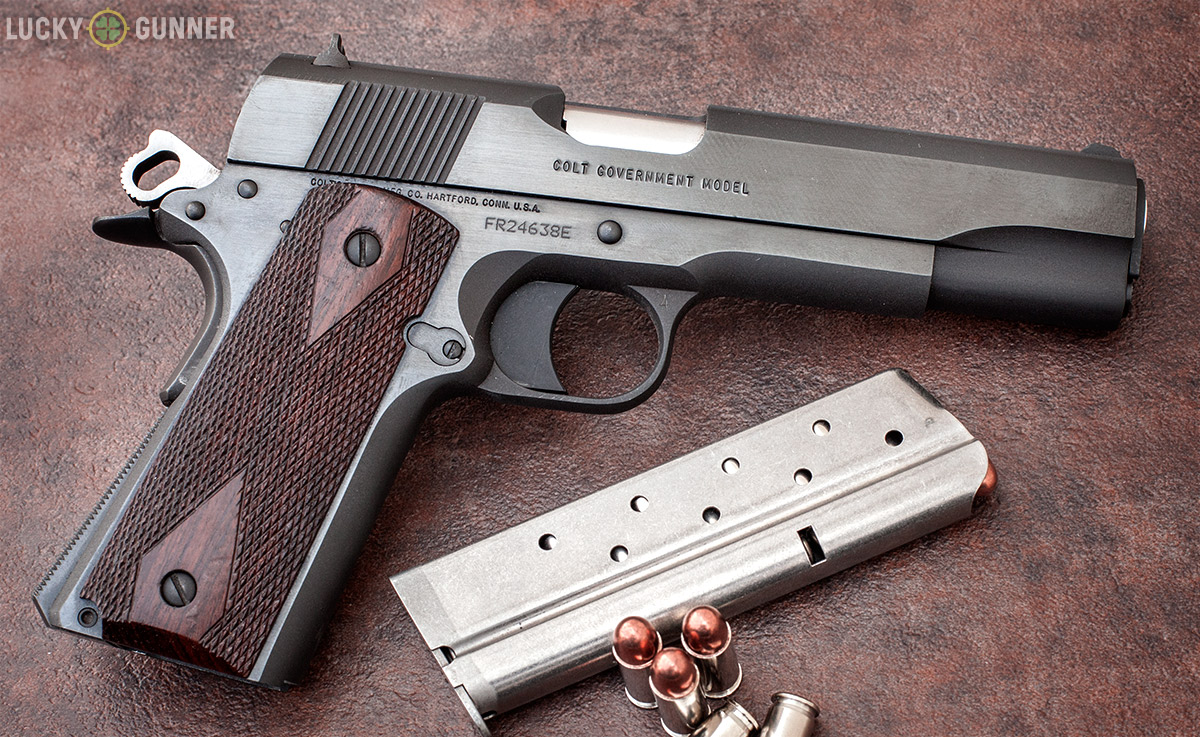
I appreciate that “melts into your hand” feeling of an ergonomically sound handgun grip as much as anyone, and it’s not a bad thing in itself. However, since being clued into this phenomenon, I’ve learned to downplay the importance of how a grip feels. When I first started shooting M&P pistols on a regular basis, I really thought the grip fit my hands perfectly when using the smallest of the three backstrap inserts that come with the gun. Then I tried adding a Crimson Trace Laser Grip. It felt huge in comparison, and I hated it at first. But timing some drills at the range showed virtually no change in speed or accuracy in daylight hours and, thanks to the laser, a huge improvement in dim lighting. The correlation between a grip that feels “perfect” and optimal performance on the range is inconsistent at best.
I’ve also had to alter the way I respond to people who ask my advice when shopping for a handgun. After getting an idea of the person’s situation, I used to offer a handful of suggestions and tell them to “try to handle as many as possible and just pick whichever one feels best in your hands.” But if I can’t tell whether a grip that “feels right” is actually going to work for me, how is a complete novice shooter supposed to figure it out in a gun store?
Fortunately, there are some red flags to look out for when checking out handgun grips that don’t require you to measure your performance at the range in order to rule them out. Your feelings can lead you astray, but if the gun actually prevents you from achieving a proper firing grip, then something will have to be changed, or you’ll need to try a different model. Here are a few common grip problems that can prevent you from shooting a handgun well.
1. Unable to Reach Controls
At minimum, you should be able to reach the magazine release and safety lever (if applicable) on a semi-auto without altering your firing grip. Ideally, you should also be able to reach the slide lock lever but the off-hand thumb can also be used, or just stick with the slide rack method on reloads. Even if you have small hands, you should be able to find a handgun that doesn’t require you to shift your hand position in order to activate the safety.
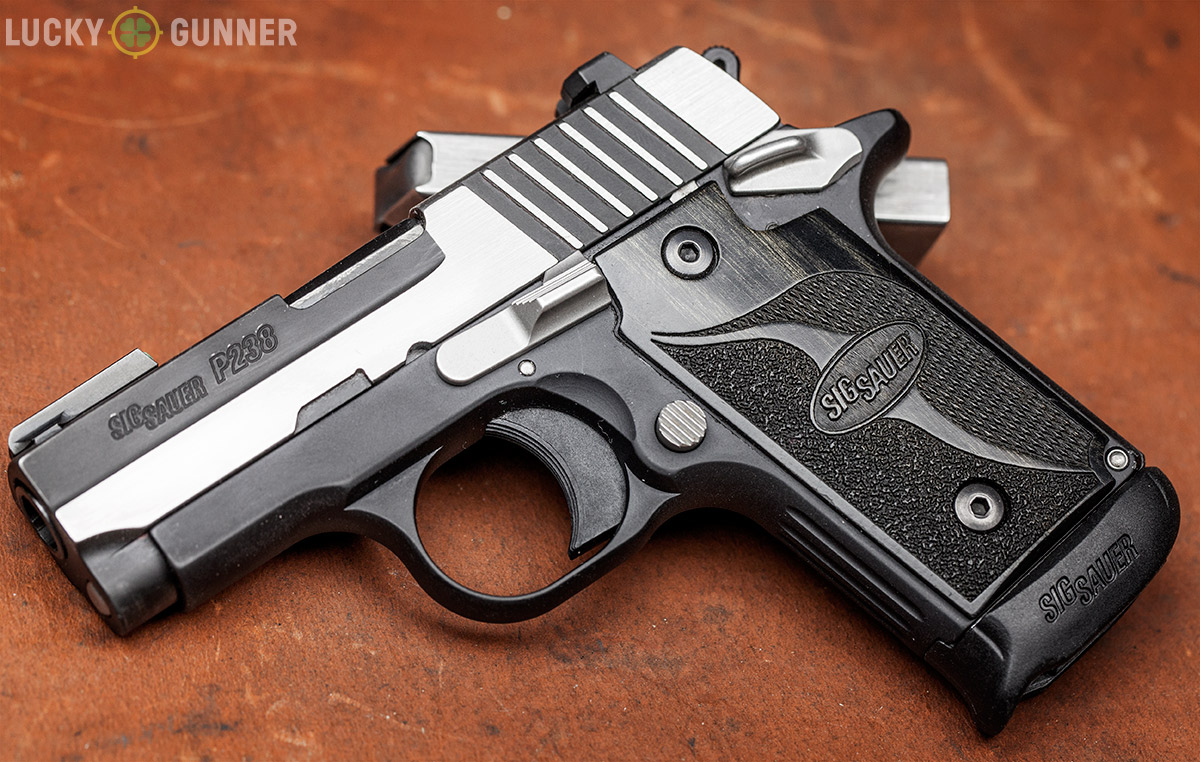
It’s not just folks with small hands who have to watch out for this, though. If you have large, or even medium-sized hands, some of the controls on the smaller semi-autos can be tough to reach. It’s not uncommon for the safety lever to be placed in an awkard to reach position. You might be able to work around these issues with some practice, but in some cases, the position of the controls might be almost impossible to access if you have a good firing grip on the gun. As a personal example, I have a really hard time finding a place for my support hand on the Sig P238 where my thumb doesn’t interfere with the slide stop lever.
2. Grip Too Wide
If you’ve had any kind of basic handgun training at all, you’ve probably seen an image like this:
Your forearm should be in a straight line with the gun, like the image on the left. This allows the recoil to be absorbed by your arm and into your body. If the grip is too wide, you’ll be forced to shift your hand over like the image in the right. Then, gun isn’t aligned with your forearm and the recoil will go into your thumb and hand instead. Not only does this prevent adequate control, it can also be very painful. Sometimes a grip like this is simply the result of improper technique, but if the grip is too large for your hands, it will be impossible to correct without physically altering the gun or trying a different handgun model altogether.
3. Trigger Reach Too Long
This one usually goes along with the grip thickness issue. Sometimes the grip might not feel too large, but if you can’t get sufficient leverage on the trigger, you’ll end up shifting your grip like in the above example in an attempt to compensate.
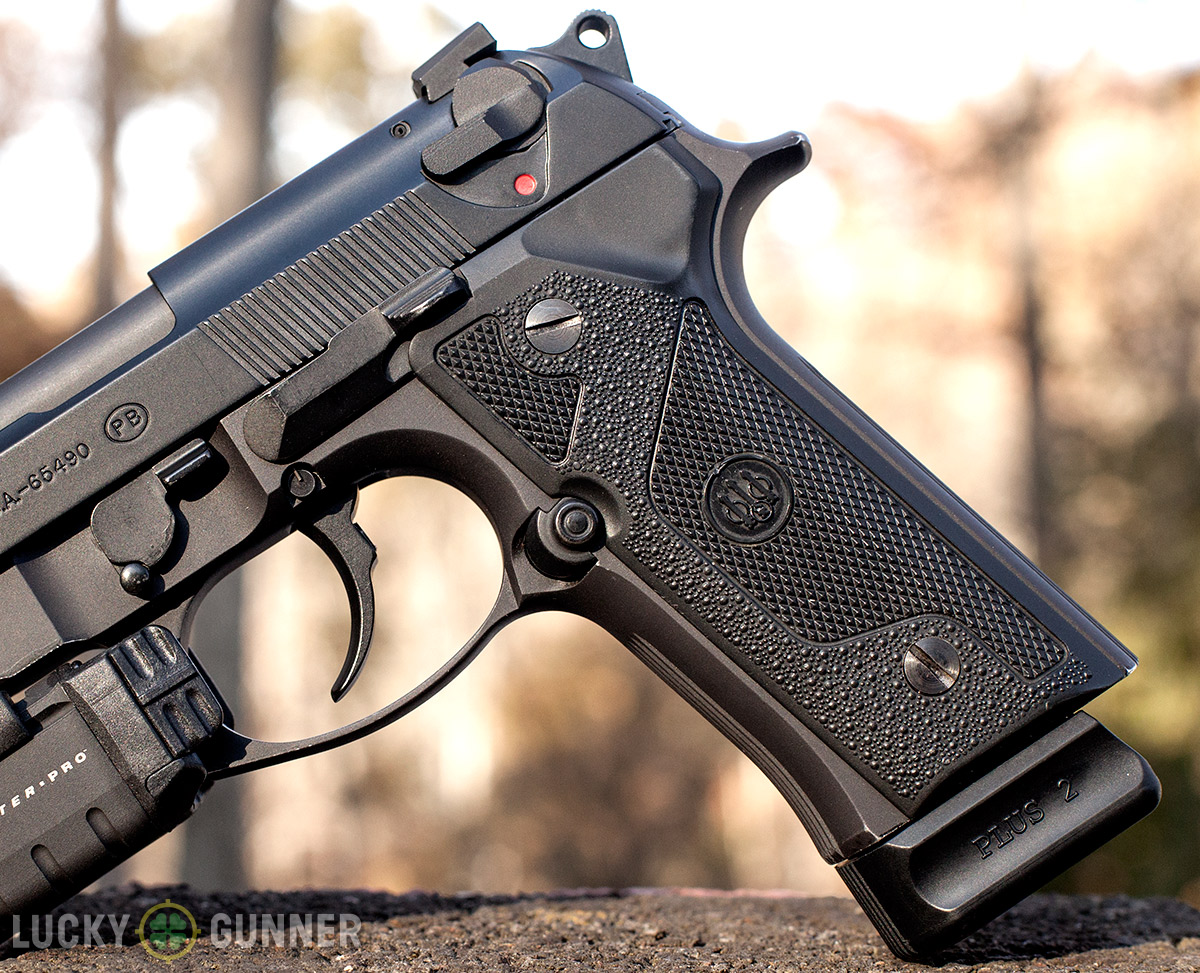
This is an especially common problem with heavier double action triggers like revolvers and traditional double action semi-autos. In fact, I think trigger reach is one of the reasons people seem to have such a “love it or hate it” attitude toward the Beretta 92FS, which has a somewhat long trigger reach in its stock form.
4. Finger Grooves
For some reason, gun manufacturers love to install finger grooves on handgun grips, but serious shooters tend to shy away from them. They’re found in the form of the subtle grooves on the gen 3 and gen 4 Glocks all the way up to the massive canyon-sized grooves on the ubiquitous Hogue revolver monogrips.

Anyone can grab one of these grips and place their fingers inside the pre-formed recesses, and it might even feel pretty comfortable. But that doesn’t mean you’ll have a correct firing grip. For many people, placing their fingers in the grooves will force the hand to be too low on the grip to have sufficient control of the gun under recoil. Conversely, placing the hand in the correct position might necessitate that the fingers wrap around the ridges on the front of the grip, rather than inside the grooves. If the grooves are subtle enough, the shooter might be able to ignore this minor discomfort, but it can also cause pain or loss of control under recoil.
5. Grip Length Too Short
The effect of grip length on shooting performance can vary a lot from one gun to the next, so this one might actually require some trial and error more than the others. With semi-auto pocket guns and small revolvers equipped with short “boot grips” it’s very common for the pinky to have trouble finding a home on the grip. If the gun doesn’t recoil much, this might not be a deal breaker. The middle and ring finger are doing most of the work anyway.

That said, I still wouldn’t recommend a gun that requires this kind of grip for an inexperienced shooter. And even if you have solid technique, some of the small autos have stiff enough recoil that you’ll want as many fingers on the grip as you can get. Fortunately, magazine grip extenders and longer revolver grips are available for almost every small handgun model in current production, so it’s an easy fix.
These tips are most useful for helping novice shooters avoid a handgun with a grip that will hinder them from learning the fundamentals . In general, it’s really not that difficult to find a handgun with a grip that’s at least adequate. As your skill level develops, it takes more trial and error to figure out which attributes of a handgun grip you can tweak to help maximize your performance
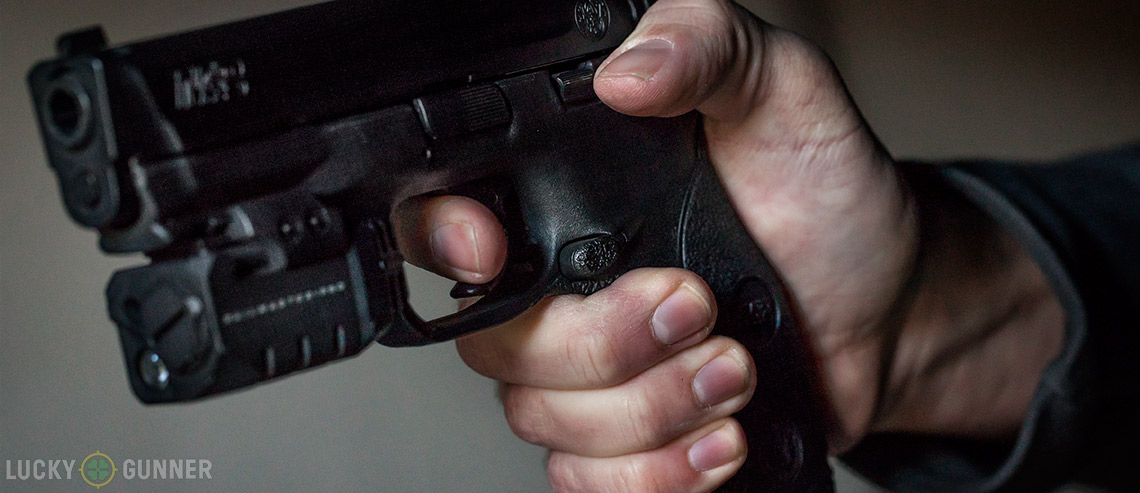

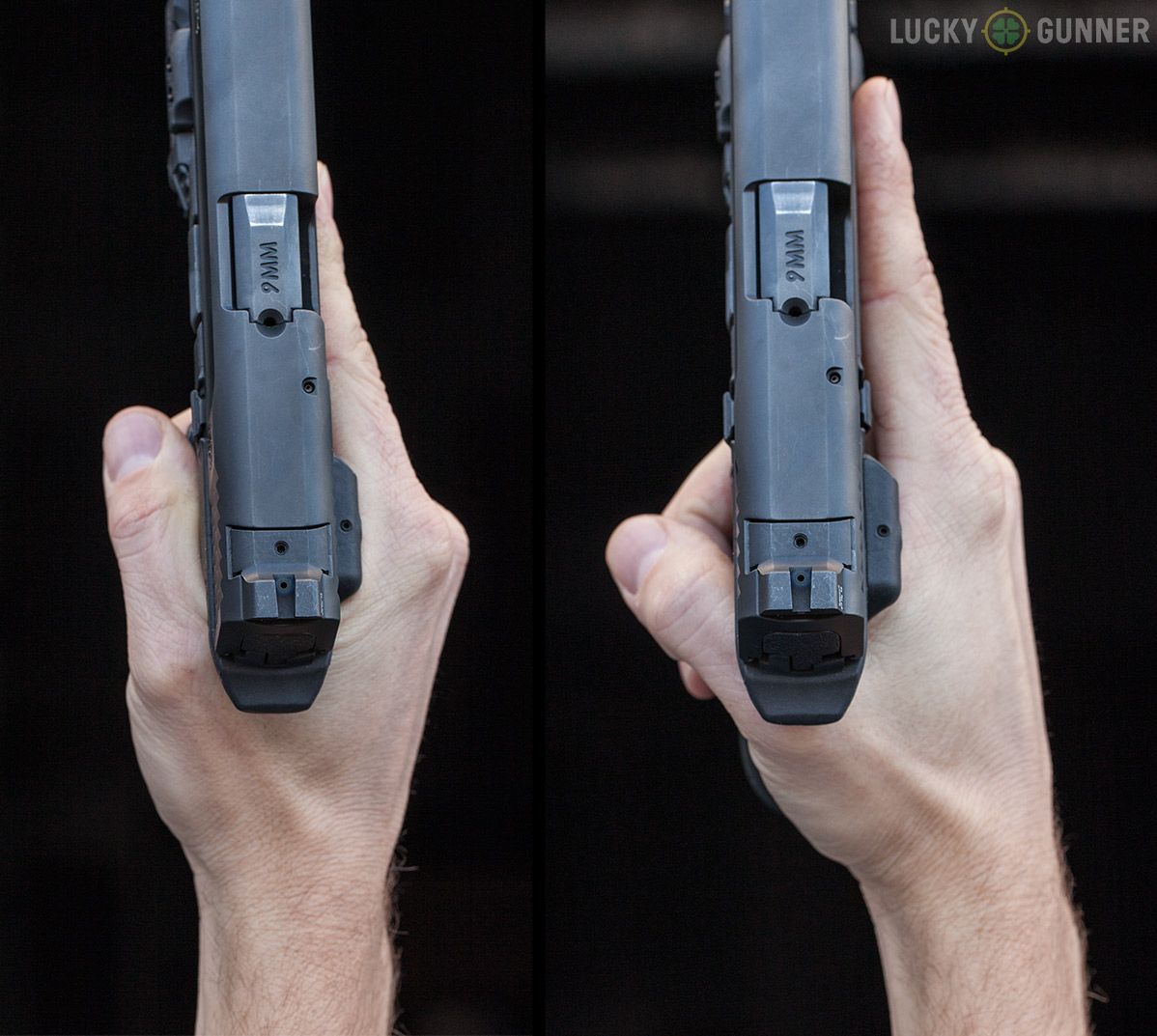
I am having a real hard time finding a 9mm auto for my wife who has small hands. Any ideas? Should I have a custom grip built? Can you even do such a thing? I bought her a Walther PK380, and it fits, but its a 380!!!! Would like for her to have something with a little more “thump” to it. I am starting to think it will be a revolver for her….looking forward to your comments. Be safe, be aware.
If she really likes the PK380, show her the new Walther CCP. Very similar size and shape, but in a striker fired 9mm. Other good options are S&W M&P Shield, Walther PPS, and Ruger LC9s (make sure it’s the “s” version). If she lacks the hand strength and/or experience to adequately control one of the small 9mms, I would suggest she stick with the .380 she can control.
A 380 she can control, like a Kimber Micro .380 ACP?
Kahr cm/pm9 series are nice.
I have a Kahr P9 and have major problems with it. First is NO SAFETY. Apparently Kahr does not put safeties on its handguns. Rounds have repeatedly popped out of the spare mag, even with it just sitting there. Impossible for me to feel safe with it. As a woman with small hands that are weak I find the slide difficult to operate. I will be trading it in. Very poor choice for a woman to conceal carry.
a 380 has all the power she needs i carry one of two 380s i own works great for me as i do not like with recoil .
My wife has tiny hands (and feet too, I’m amazed she stays upright in heels), and she really likes the Kahr PM-9. Oddly doesn’t care for the 380 LCP, I think it’s more “felt” recol maybe?
SIG P938, great conceal carry gun. Small Compact. 9MM.
Smith & Wesson Shield? It’s nice and small and doesn’t have nasty recoil!
I have a Ruger LC9S and it does fit smaller hands and is a 9mm
I just bought a new Rossi .357 mag snubby and am having grip troubles. I fired it as fast as I could with my full-house reloads. By the 3rd shot my hand was bleeding! I’ve been shooting for 56 years and I don’t think I’ve ever been so beat up! I carried a S&W model 28-2 four inch for years and even ran some of these loads through it to see if it would chew me up. Nope! I have Houge mono-grips with finger grooves similar to those on the Rossi, on the model 28. I realize that there is a heck of a difference in weight and barrel length and that those factors have a lot to do with recoil. I have pretty bad arthritis, which is another problem. I’d really like to carry the little snubby, but unless I van find better fitting grips (the trigger reach is a bit long and I can’t get up as high as I should on the grips) I’m going to have to sell it or something.
Does anyone who has had similar problems have any idea what type of grip and manufacturer that might work out better? I have medium hands and some strength loss. Would smooth grips be a better choice? Something like Jerry Michulek’s design??
Any suggestions are appreciated!
Tried Wood grips?
No, George, not yet. I’m going to see if some of my friends who have various grips on their snubbies will let me try them to see which one might work. I have a couple of buddies who use wood grips and maybe one of them will feel right. I hate to buy and then find out they still won’t work. Very few gun stores in my area have a selection of grips to try so I’ll have to buy online anyway. Thanks for the suggestion!
Herretts stocks in Twin Falls Idaho builds truly custom pistol grips from your hand tracing, for your model of pistol. http://www.herrettstocks.com
Another great article. Is it correct to say that the grip with the pistol in a straight line with the forearm can achieved with the Weaver stance and not with the isocyles stance?
Depending on which version of the Iso stance you’re looking at, the forearm might not be perfectly in a straight line with the gun, but that doesn’t really change the principal I was trying to illustrate in the photos. Using either Weaver or Iso (both can work just fine), if the grip is correct, the recoil impulse will still be absorbed through the wrist and arm rather than by the hand and thumb.
I have a gun that fits my hand. It’s the HK P30. I have another, Walther P99, and then there’s my M&P.